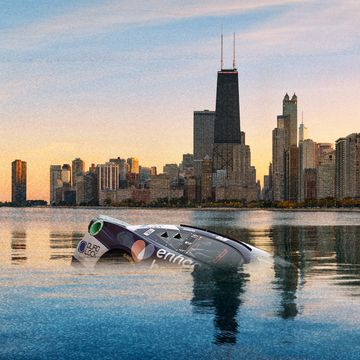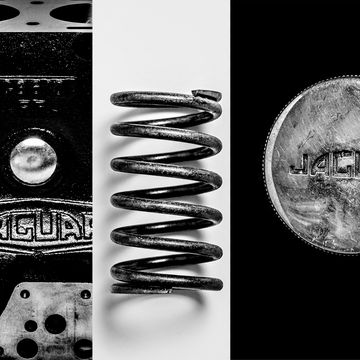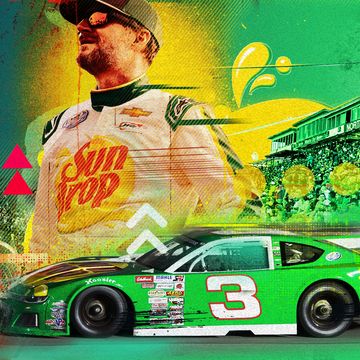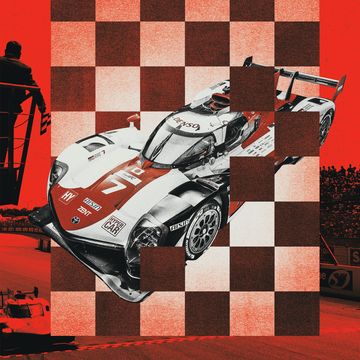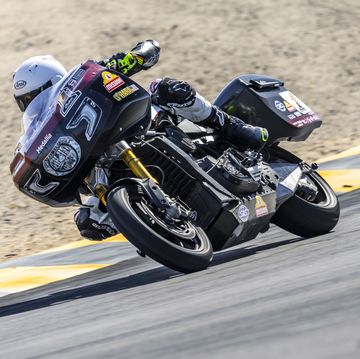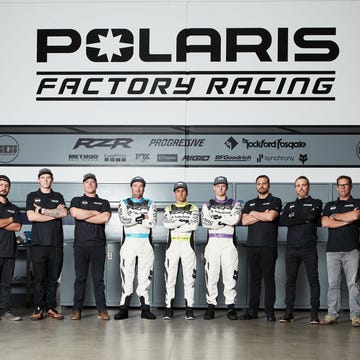In 1-second intervals, the five starting lights go red. Then within 4 to 7 sec. they're extinguished, and all hellacious fury breaks loose as the Formula car grid mixes it up into the first corner. Only this time, the loudest sounds are the crowd's roar, tires scrabbling for traction and the high-pitched whir of electric motors.
Not likely, some say. Inevitable, say others.
Let's look at this from several perspectives—organizational, technical and sporting as well as societal.
FIA Formula E Championship
In July 2011, the Federation Internationale de l'Automobile posed a "Call for Expressions of Interest and Selection Process" dedicated to a Formula E Championship slated to begin in 2013. The organizer chosen (no later than December 15, 2011) would have a three-year run, 2013–2015, of these competitions specifically for battery electric vehicles.
Fostered by FIA's vision of social responsibility—and, no doubt, its fear of sanctioning buggy-whip sports in the 21st century—this BEV championship is seen as something quite distinct from any current forms of motorsport. Formula E is to engage an entirely new segment of fans, young urbanites potentially already into road-going electric mobility. Sponsorship would come from the electric/energy industry. Cars are to be open-wheel single-seaters with a minimum weight, driver included, of 780 kilograms (1720 lb.), their performance comparable to current FIA Formula 3 levels.
City centers are seen as the potential venues for Formula E events; this, for several reasons. Street races become part of a "happening"; spectators come to party as well as to watch races. Other aspects cited by FIA include a music dimension (for once unhampered by raucous exhaust), "intelligent entertainment" promoting EVs, maybe even support demonstrations by outrageously quick EV dragsters.
What's more, given the inherently scant range of BEVs (and the attention span of these new spectators?), in their first iteration the races will be short, around 15 minutes, with plenty of corners and no long battery-sapping straights.
If all this sounds hopelessly Goody-Green-Shoes, please remember that I am merely the messenger here. See the full details here.
On the other hand, the FIA proposal contains some thought-provoking rationale. Younger people are heavily into electronic gaming, and corporate ties with this electrotainment community are foreseen. Interactivity with the fan base is sought through social media. Driver blogs, autograph sessions, live gaming and electronic co-drives are part of this landscape. Even an international driver's search could be incorporated, with an opportunity to win a seat in E Championship competition. Last, the younger age group being chased is seen as generally more environmentally committed than gray-tops such as me.
But Where's the Noise?
Another gray-top (and a rather more influential motorsports spokesman), Bernie Ecclestone, raised a key shortcoming of EV racing. As quoted by the Australian Associated Press, he said: "I think there are two things really important for Formula 1. One is Ferrari and the other is the noise.... It's unbelievable that even more so with women, the ladies love the noise."
Along similar lines, Ecclestone has also come out against the FIA's 2014 proposal of prohibiting internal combustion along F1 pit lanes. No fuel, no spark; the cars will rely on their ERS (the new moniker describing energy recovery systems beyond the kinetic variety that currently exploit only regen braking). Ecclestone feels that the lack of noise along pit lane would be downright dangerous.
As to the more general issue of noise, race car designer Sergio Rinland, quoted in a recent Race Tech magazine, said: "It would be fascinating to do a poll of 10-year-olds, say. You could ask them how they rate the importance of speed, energy, noise and recyclability, and the results would be very different to the current generation of adults—even those in their 20s."
In the same September 2011 article, Race Tech also cited Dr. Paul Faithfull, technical director of Westfield Sports Cars. (Westfield manufactures the iRacer, a $140,000 BEV race car of Lotus Seven-inspired heritage.) "Tight twisty circuits are going to be the best place for electric racing initially and there's lots of interest in running city center events," said Faithfull. "In that sort of environment you don't need a huge amount of noise."
In fact, many race venues these days have noise limits. Noted Faithful, "It's all about getting the spectator's adrenaline going, and we have the opportunity to start with a clean sheet of paper here."
Note, many extreme sports don't have—nor do they need—heavy sound. Bobsledding, downhill slalom, mountain biking, snowboarding and other gravity sports certainly possess inherent excitement. And, for that matter, the current crop of turbodiesel endurance race cars aren't known for being particularly raucous, either.
On the other hand (warning: gray-top comment ahead), I experimented with this as I watched a televised F1 race, starting as they often do at 0-dark-30 here in U.S. Pacific Time. Even with the sound off, I found the start of the race displaying plenty of fury. As the field stretched out by midrace, though, it was nap time.
Electrons Kick Butt
It isn't that BEV race cars need be slugs.
Apart from their eerie lack of noise, they have the potential for gobs of torque generating mind-boggling acceleration. Another nuance potentially available to BEV designers is the packaging efficiency of hub motors—at all four corners, should regulations permit. This in turn gives rise to torque vectoring and other handling nuances. The ultra-smooth nature of modern race circuits could counter the unsprung weight detriment of hub motors. What's more, their adoption might even downplay the apex-thumping antics of today's race car cornering. On the other hand, street circuits don't necessarily display utter smoothness.
We at R&T have already experienced the extremes of BEV capability with "Eclectic Electrics," March 2009, in piloting Ian Wright's fabulous Wrightspeed X1. As noted back then, this was the second-quickest car I had ever driven—bettered only by the Benetton B186 Formula 1 car (and, admittedly, pre-Bugatti Veyron).
The Wrightspeed X1, Ian Wright's electrified Ariel Atom, could have been made for FIA Formula E: 1705 lb. with driver, 0–60 mph in 2.9 seconds, 11.6 sec. in the quarter mile and 1.19g around our skidpad. Dump the second seat and it's ready!
Curiously, the X1 came very close to anticipating FIA's Formula E specifications, even to its test weight, driver included, of 1705 lb. The X1's air-cooled lithium battery pack weighed 538 lb.; its energy capacity, 27 kWh (a Nissan Leaf's is 24). The car posted a 0–60-mph leap in 2.9 sec.; its quarter-mile results, 11.6 sec. at 103.3 mph. It pulled 1.19g on our skidpad and snaked around our slalom pylons at 71.1 mph. Achieving all these feats, we estimated an "R&T performance-stressed" range of 50 miles, more than compatible with Formula E's proposed 15-min. race formats.
Toss away the X1's passenger seat, clean up its aero (it's an electrified Ariel Atom), balance it to the regulated 1720 lb., and you're ready to run.
For additional proof of EV excitement, check out the video of the Toyota Motorsport Group EV P001 and its 7:47.8 lap of the Nürburgring Nordschleife. Essentially an electrified Radical sports race car, the TMG P001 was fitted with dual electric motors contributing 375 hp and 590 lb.-ft. of torque, and geared to produce a top speed in excess of 160 mph. TMG says it will begin commercial sales of this technology in 2012.
The Price of BEV Range
Range of a BEV is directly related to its battery pack's energy content. By contrast, instantaneous performance depends on the pack's power, a completely different measure. Today, lithium battery technology is the smart money bet for optimizing either of these. The real challenge is the choice of electrode material, the most stable not necessarily being the most effective or least costly. Performance matters, but so does safety. And, even in racing, cost is not irrelevant.
How much does BEV range cost? Several sources suggests that 24 kWh will likely handle 30 minutes of racing. Thus, let's figure on half that for these initial 15-min. sprints. At a general guideline of $545/kWh, this means our 12-kWh battery pack will cost around $6540 and, by the way, account for around 265 lb. of our Formula E car's weight. Quite a contrast to a race car's fuel cell.
There's an interesting factoid lurking here: A comparable weight of gasoline (say, 40 gal. of it, accounting for the fuel cell too) would certainly propel our 1720-lb. Formula car a lot longer than 15 min. This is yet another way of demonstrating the advantage of a liquid fuel over electricity in terms of energy storage.
From another perspective, if our sponsors have particularly deep pockets—and regulations allow—we could opt for the likes of batteries used in Formula 1 Kinetic Energy Recovery Systems. Though lighter, they've been quoted at 30,000–70,000 euros ($40K–$95K) a pack in their modest KERS application.
Oops, were we talking about societally acceptable racing?
And Who Wants 15-min. Races?
The Sporting Regulations set a Formula 1 race at a nominal 305 km (189 miles) or two hours, whichever comes first. And the thought of Level 3 "Quick" Charging—80-percent replenishment in 30 minutes—is positively ludicrous in this context.
But there are other tantalizing ideas.
The company Better Place has made a business model out of real-world battery-swaps in five minutes. Couldn't a dedicated Formula 1 design and practiced pit crew get this down to mere seconds? Is this a 3- or 4-pack race? The mind boggles at battery investments, however.
What about pit-lane drive-through charging? The likes of Toyota, Volvo and others are exploring what the latter calls Continuous Electric Drive, essentially charging on-the-go by means of energized road surfaces. Volvo prefers inductive charging, electromagnetic transfer of energy rather than direct contact. Toyota's approach uses the tires as the conductive medium.
Of course, there's another analog to this, a streetcar, electric train, subway—or slot car—powered on-the-go through direct contact with an overhead line, hot rail or embedded circuit.
Do these make any sense for pit lanes? Not if you consider replenishing 12 kWh of energy in a car's 25-sec. drive-through of a typical pit lane. By my figuring, this works out to 12 kWh/25 sec. = 12 kWh/0.007 hr. = 1714 kW, more than 1.7 megawatts of power being expended.
Why do I imagine the lights dimming throughout Monaco with each drive-through?
By the way, on another note entirely, Volvo has also investigated using layers of bodywork as EV ultracapacitors. Storing their energy electromagnetically rather than chemically, ultracaps are known for their high power, albeit relatively low energy capabilities.
Electrode Slurry Pit Stop?
Researchers at M.I.T. have proposed an entirely new approach to energy storage, one that appears amenable to racing as well as road-going applications. Termed a semi-solid flow cell or flow battery, it gets its recharge through replacement of electrically charged slurry. See this month's Tech Tidbits for more details.
Such advanced battery concepts could thrive in an EV racing environment. Another of these, lithium-air, is seen as a Next Big Thing in batteries. Perhaps five to 10 years from production, lithium-air promises to improve energy storage by a factor of 10 compared with that of current lithium-ion varieties. This advantage could be tailored to suit the application: 1/10 the weight, volume or cost, 10 times the range, or any balancing thereof.
It's an adage that racing improves the breed. Here's another to ponder: Whir on Sunday, sell on Monday?





